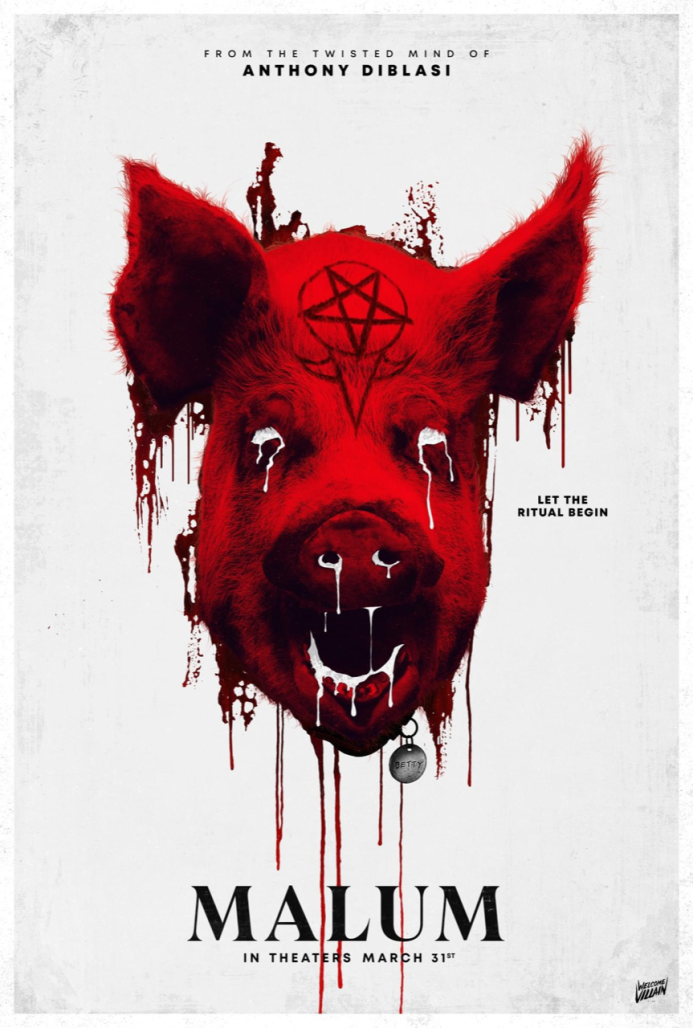
It was, plain and simple, a great horror movie.
I was taken by surprise, then, when I first heard it was being remade by the same director, the first American director to do so since Leo McCary did it in 1957 with An Affair to Remember (a remake of his 1939 film Love Affair). Now titled Malum, the remake follows the same big story beats as the original, but after watching it I’m inclined to call it more a reimagining than a remake.
Malum follows rookie officer Loren (played by Jessica Sula) as she takes up the last shift (hence the name of the original) in a decommissioned police station her father worked at. There’s a very violent history behind the station’s walls regarding a cult that sacrificed girls to a dark presence that has apparently haunted the place ever since they were captured and held there. Loren’s father is a part of that history and it all slowly comes out during that last shift, when cult threatens to come back with a mind to swallow up the departed officer’s daughter in their new cycle of violence.
Mulum’s strengths certainly come from the things that DiBlasi was already successful with in the original film. The horror elements live in plain sight, inspiring fear by virtue of visual design first and sound effects second (something I admired from The Last Shift). The decision to keep the camera close to Officer Loren throughout amplifies the horror, creating a claustrophobic sensation that places the viewer in the station with her. This is where things start changing though. The haunting carries a whole new sense of scale that turns the already scary station into a hell of dark corners and tight corridors teeming with phantoms that love to step into the light.
The cult’s backstory rounds it all out with a nuanced take on myth creation that frames the paranormal as something that lives outside convention. There’s an interest in building a kind of horror that harbors its own identity. DiBlasi finds in Malum the tools to create his own monsters and the results are terrifying enough to warrant further forays into their world.
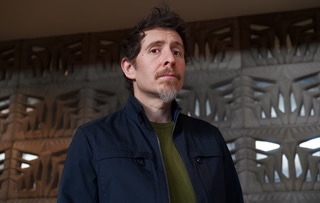
The Beat sat down with director DiBlasi and actress Natalie Victoria (who returns to the same character she played in the original movie for a very different interpretation of her in the remake) to talk process, fear, and the work that goes into reimagining a film that already conjured some great horror to begin with.
RICARDO SERRANO: Malum feels to me like unfinished business. Like there were other horrors left to explore, which is perhaps why it feels more sinister than The Last Shift. Did this figure into your decision to go for a remake?
ANTHONY DIBLASI: There are always things you have to leave on the table when you’re making a movie and obviously we had stuff that we just didn’t have the resources for, that we could now explore in this movie. I wouldn’t say it was that there was more story to tell from the first film, but rather that there were ways to tell a bigger story. That’s, I think, what excited us the most about Malum.
The Last Shift was meant to scare people, it was meant to be experiential. It was about being in this moment with this character and go through what she’s going through. We wanted to retain a lot of that, but now we wanted to explore the characters more, to delve deeper into each one to give them different meanings.
Another big part of the reason behind the remake was the way I envisioned the first film. The Last Shift was a crowd pleaser. We kind of designed it to be seen in a theater, and then that didn’t happen. It was frustrating to a point because we designed the story to fit that movie theater experience. I wanted people to see it with a crowd and appreciate the sound design as it was meant to be heard.
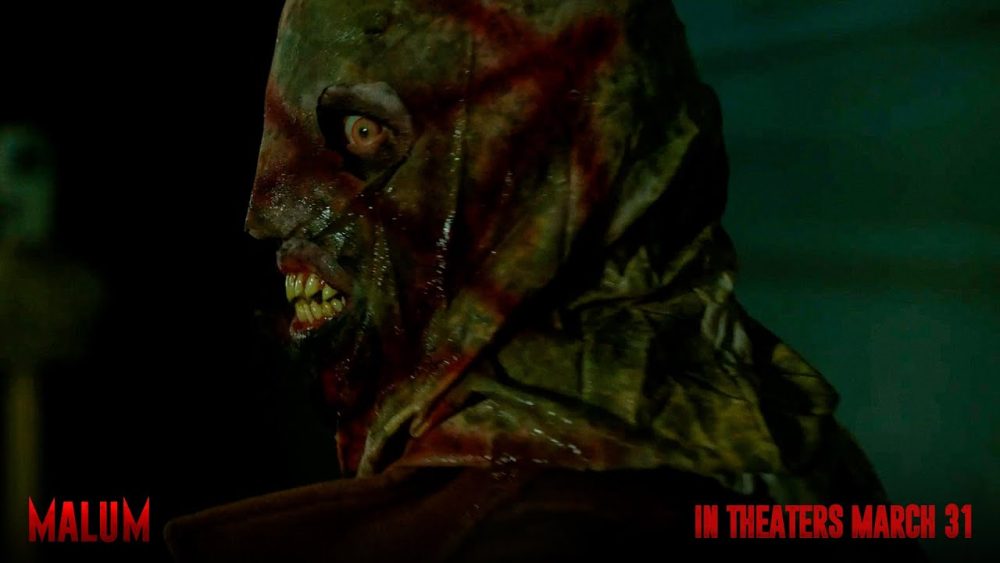
SERRANO: What worried you about remaking The Last Shift? Anything you definitely didn’t want to lose or change?
DIBLASI: I think the trepidation was, mainly, you don’t want to feel like you’re doing the same thing. You want to make sure you create a new kind of enthusiasm and carry it all the way to the end of the movie. When we started writing the remake, it started to depart very quickly from the original in terms of character motivation. From that point it just became a different movie.
I really never felt like I was making the same movie again. To a point, I was making this movie for a new audience. I knew that fans of the first one will most likely see this one and that they’ll probably compare it, but there’s also a lot of people that haven’t seen it and that will come into this fresh. So, I wanted to take some of those favorite moments from the first film and recreate them just enough so that someone who did see it would also be surprised.
Once I got into writing the script with Scott Poiley a lot of my initial fears started dissipating.
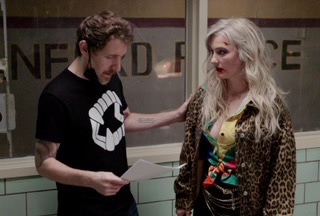
SERRANO: Casting the lead for this remake, considering the previous actress (Juliana Harkavy) did such a good job of carrying the original film, must’ve been daunting. What made you land on Jessica Sula for the role of rookie officer Loren?
DIBLASI: Well, Juliana’s just so strong in Last Shift. She carries the whole film and it is like 99% her picture. It’s almost like a one-person show. Because of that, when we were talking about actors that could step into the role of the rookie officer the movie centers on, we had a very short list of people we wanted to talk to.
When Jessica and I had our first meeting, we instantly clicked creatively. I think that’s a really important thing, that you find an actor that is going to trust you on set and that you already have a shorthand with almost inherently. If the ice is broken immediately, then you feel like this actor is going to allow me to push them to get a special kind of performance.
I remember warning her at first. I wanted her to be aware of what she was getting into having the camera so close on her most of the time. The whole time, actually. When you’re doing 12-hour shooting days with the camera on you all the time you have to kind of prepare yourself mentally and physically. But she didn’t break. In fact, she was eager to do it. She wanted the challenge.
SERRANO: The experience carries a different kind of complexity for you, Natalie. Your Last Shift character, Marigold, makes a return in Malum but in a way that completely reimagines her. It’s kind of emblematic of the film’s vision itself, of its intention to not just be a copy of the original. What went into preparing for your role under these conditions?
NATALIE VICTORIA: It was definitely a challenge. Certainly a unique opportunity, you know, that actors normally don’t get. When you’re creating a role, half of it is the writing and then half of it is the performance.
Anthony did this great job writing and reimagining this, so I felt that extra pressure to deliver on my end. I found there’s a lot more danger this time around, darker elements mixed in with a little uncertainty to try and get under the skin of the characters. Last Shift’s imagining of Marigold leaned a bit more on her vulnerability. You get little hints of that in the first one. In Malum, Marigold leans more into this hidden story she carries that, again, we only get glimpses of. That allowed me to play with ideas that present Marigold as someone on the run or someone with a more tortured existence.
My hope is that when fans watch this movie they won’t recognize it’s the same actress playing the same role. That was my goal. I just wanted it to be something completely new, something I could disappear into.
SERRANO: You’ve had extensive experience producing and even directing works by the great Clive Barker, which eventually led to your adaptation of one of his short stories, Dread (2009). There are traces of Barker’s own brand of horror in both Malum and its original version. Do you feel as if your time with the writer and his work influenced your work here?
DIBLASI: Clive was very intentional when he made Hellraiser. He wanted to give people these characters that they had not seen before. He made it a point to show his creations weren’t from any Hell we’re familiar with. He wants you to ask who these characters are, what’s important about their names. He was very Lovecraftian in a way in creating his own mythology.
That’s what I wanted to do with this one. I didn’t want to keep everything from the first one as it was. I wanted to find out what I could build from the elements already there to maybe hint at a different and more original mythology.
We had trigger words that everyone’s familiar with, like hell and the devil and such. We might mention the king of hell and things like that, but it’s more as a reference to something that’s related to that way of thinking. Clive definitely rubbed off on me in that regard, to have the confidence to try and create something that was mine.
VICTORIA: That also comes through in the decision to move away from the first film’s entity, Paimon (that’s right Hereditary, we did it first). I think it gives this movie’s entity a chance to be frightening on its own terms rather than on associations to pre-existing stuff. For Malum, the darkness feels more primordial. It even goes down to the location. That police station had a real and heavy sense of bad things happening there, and our location scout did such a great job of finding this place that already looked like it had a rough history to it. I think that helped everyone build story from it and around it.
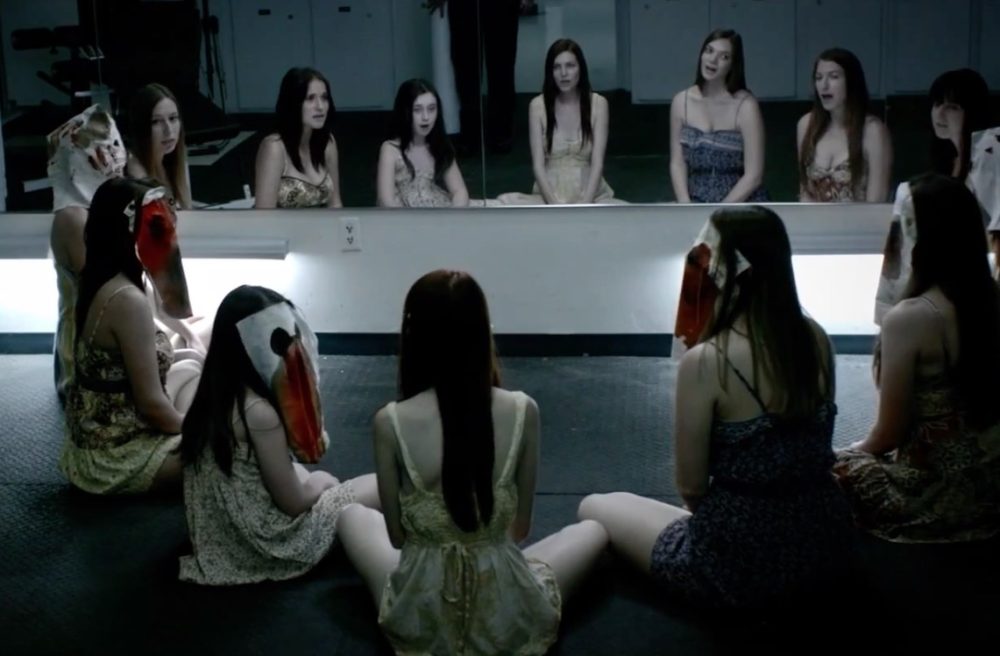
SERRANO: Okay, bonus question. Turns out, Anthony, that you interned at Marvel once upon a time. Did that experience impact the way you approach filmmaking in any way?
DIBLASI: Oh man, that was my first internship. When I was in college, my senior year in Los Angeles, Marvel was just starting out with their movies. I think they had just made the first Spider-Man movie. I was part of a team that worked from a very small office making packets to send to actors.
That was like my main thing. I was putting all these comic book pieces together and creating like Dr. Strange collages and other stuff that would introduce the character to people. That was the bulk of what I was doing.
I think I knew it wasn’t going to turn into a job eventually, nor was I used in a capacity that suggested that. I was reading a lot of scripts, though, because they had sold off so many characters. There were so many previous iterations of movies that never got off the ground. At one point I had read six different treatments for a Fantastic Four movie.
After a while, though, I started looking for other opportunities that aligned more with my interests in horror and that’s how I made my way towards working with Clive Barker.
Malum is out on select theaters on March 31, 2023.


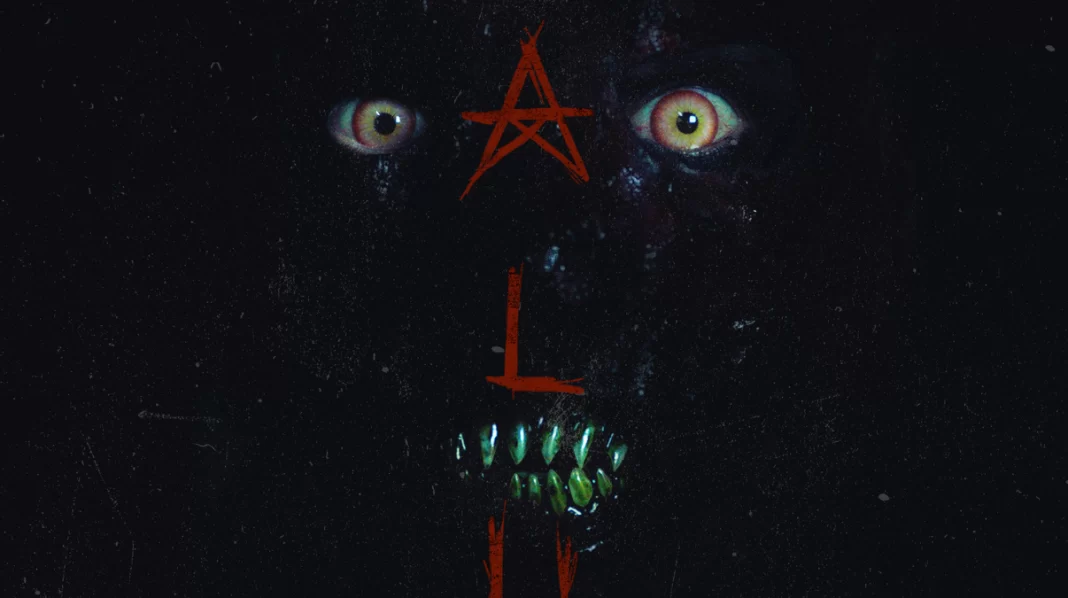
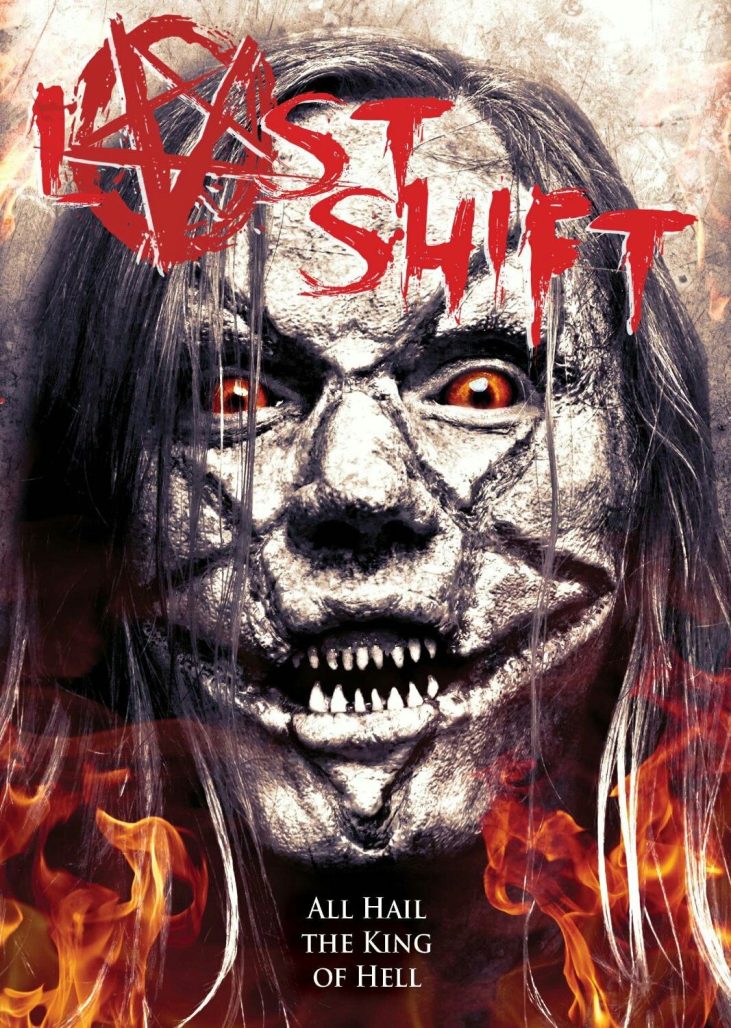
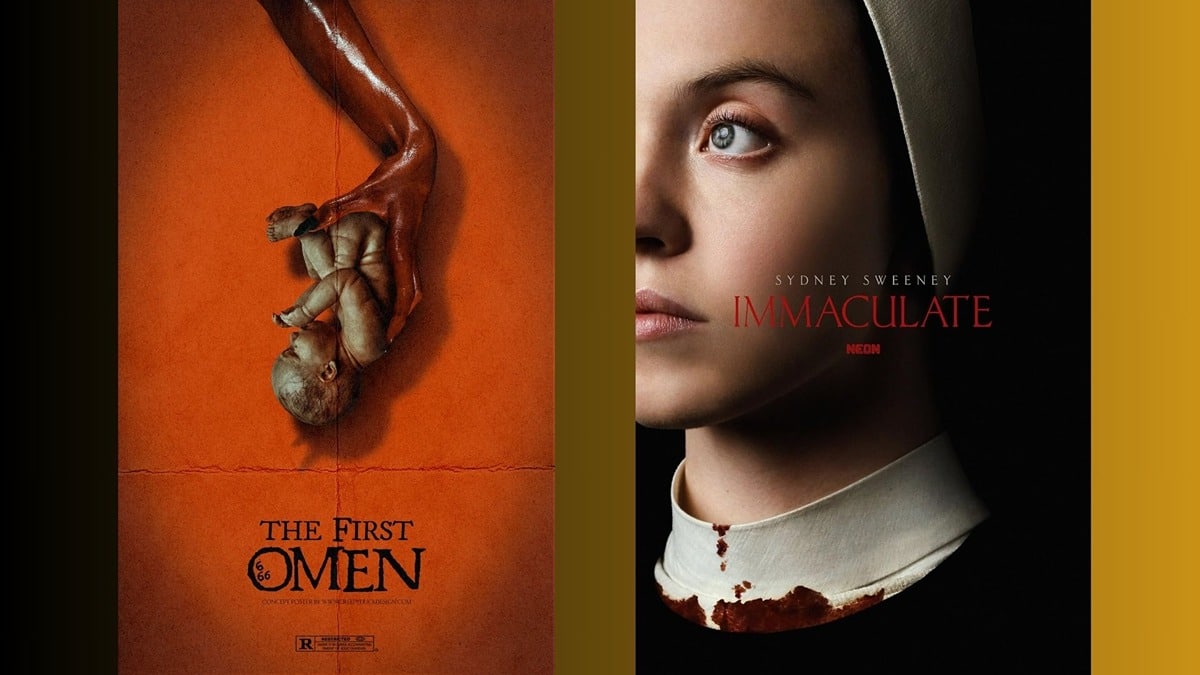




Small correction: The last photo is a still from Last Shift, not Malum.
Comments are closed.